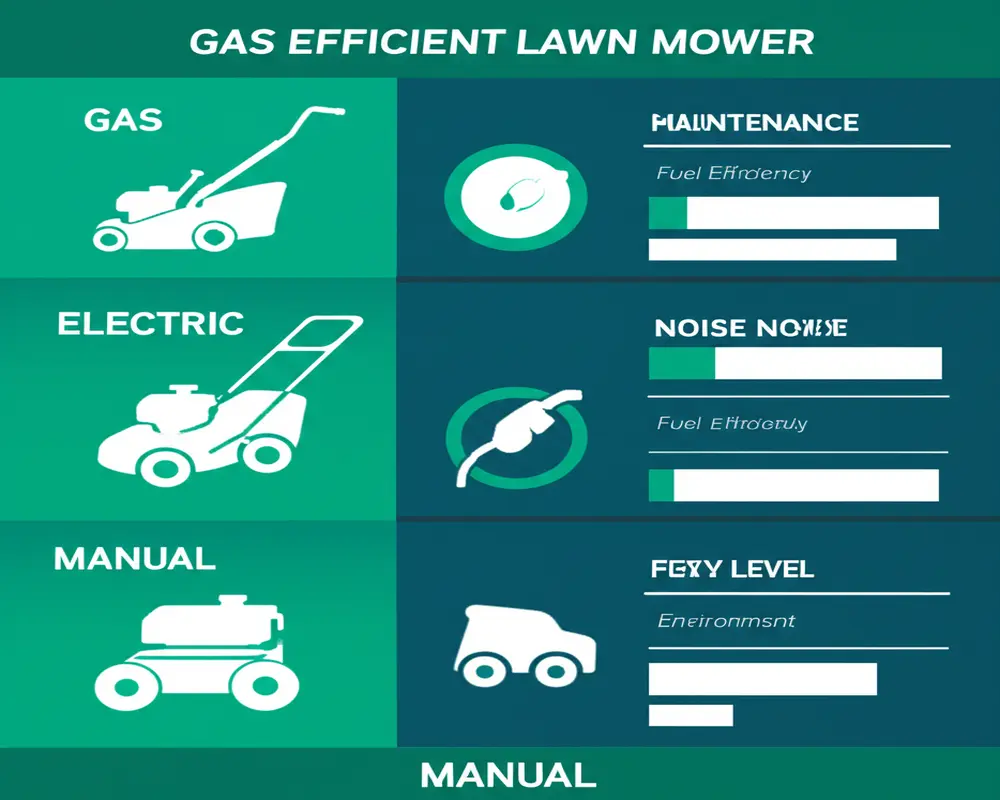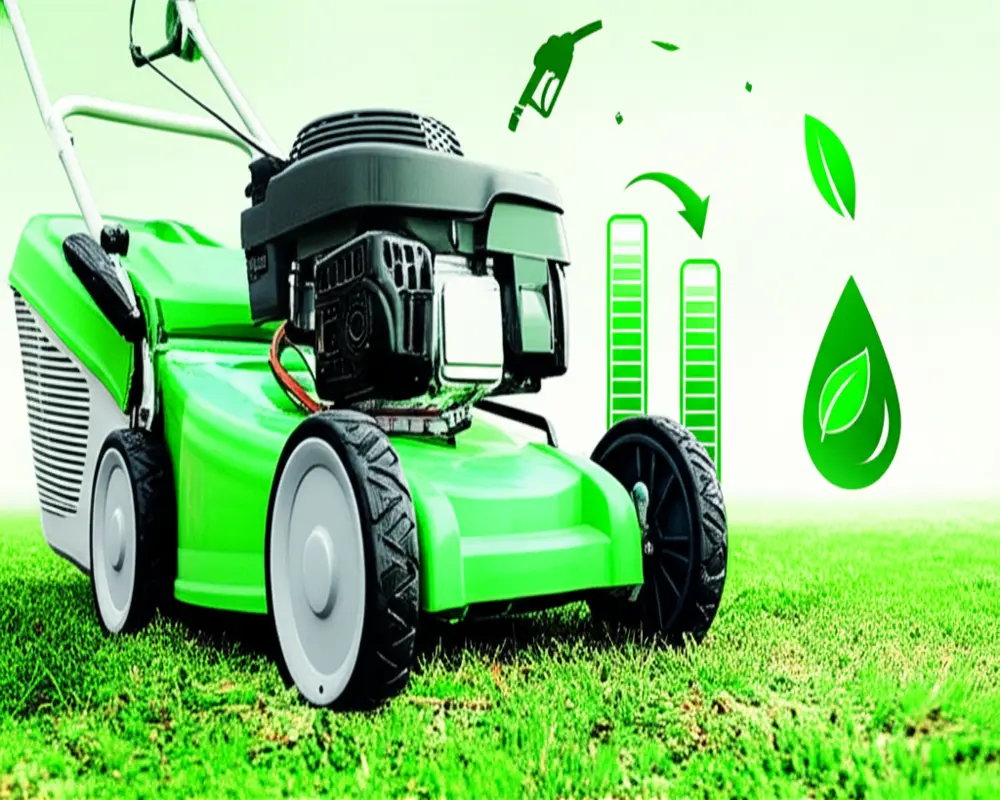Lawn Mower Fuel Efficiency: Maximize Savings & Reduce Emissions
Lawn mower fuel efficiency is a critical aspect for homeowners and landscapers alike who aim to save money, enhance mower performance, and minimize environmental impact. Understanding how to optimize fuel consumption not only reduces operating costs but also helps in lowering the carbon footprint associated with lawn maintenance. This article provides an in-depth guide covering the economic and environmental benefits of fuel-efficient mowing, key factors influencing fuel use, actionable tips to boost efficiency, troubleshooting, and buying advice to select the best mower for your needs in 2025.
I. Introduction: Why Lawn Mower Fuel Efficiency Matters
Fuel efficiency in lawn mowers refers to the mower’s ability to effectively use fuel to perform its cutting tasks with minimal waste. Efficient fuel use means less fuel burned for the same job, translating into monetary savings and reduced emissions. The importance of fuel efficiency extends beyond just economic benefits; it also contributes to better mower performance and longer equipment lifespan. This comprehensive guide will explore how fuel efficiency impacts your expenses, the environment, and mower durability. Additionally, it will detail practical strategies and maintenance routines to optimize fuel use, while also comparing different mower types to help you make an informed purchase.
II. The Economic & Environmental Benefits of Fuel Efficiency
A. Cost Savings
Inefficient fuel consumption directly inflates the cost of lawn care. For example, a mower consuming 2 gallons of gasoline per hour at $4 per gallon costs $8 per hour to run. Improving fuel efficiency by even 20% can save nearly $1.60 each hour, which adds up significantly over the mowing season. Long-term, efficient fuel use reduces not only fuel expenses but also maintenance costs due to less engine strain and wear. These savings accumulate, making fuel efficiency a financially smart choice.
B. Environmental Impact
Lawn mowers emit greenhouse gases such as carbon dioxide (CO2) and volatile organic compounds (VOCs), contributing to air pollution and climate change. According to the Environmental Protection Agency (EPA), small engines like those in lawn mowers emit disproportionately high levels of pollutants compared to passenger vehicles. Enhancing lawn mower fuel efficiency decreases fuel burned, thus lowering emissions and helping reduce your carbon footprint.

C. Performance & Longevity Benefits
Fuel-efficient mowers usually operate with less engine stress, which can translate into smoother performance, consistent power delivery, and fewer breakdowns. Proper fuel use and maintenance extend the lifespan of the mower’s engine and components, protecting your investment and reducing replacement frequency.
III. Key Factors Affecting Lawn Mower Fuel Consumption
A. Engine Type and Condition
The engine type is a major determinant of fuel consumption. Two-stroke engines are generally less fuel-efficient and produce more emissions than four-stroke engines. Four-stroke engines have separate compartments for oil and fuel, improving combustion efficiency. Among four-stroke engines, Overhead Valve (OHV) designs tend to be more fuel-efficient and cleaner running than flathead engines. Engine displacement and horsepower also influence fuel use—larger engines consume more fuel but may be necessary for bigger lawns. Regular engine health checks, including oil levels and spark plug condition, are critical to maintaining fuel efficiency.
B. Mower Design and Size
Fuel consumption varies between push mowers, self-propelled mowers, and riding mowers. Push mowers generally use the least fuel, suitable for small yards, while riding mowers consume more due to larger engines and heavier weight. Deck size affects the amount of grass cut per pass; larger decks can reduce mowing time but might increase fuel use per hour. Balancing mower size with lawn size is vital for optimizing efficiency.
C. Blade Sharpness and Deck Maintenance
Dull blades require more engine power to cut grass, increasing fuel consumption and causing unnecessary engine strain. Keeping blades sharp reduces fuel use and improves cutting quality. Additionally, regularly cleaning grass buildup under the mower deck prevents drag and helps maintain smooth operation.

D. Operating Habits and Techniques
Mowing at an optimal speed and following efficient patterns like spirals or systematic rows reduces idling and overlapping, thus saving fuel. Cutting grass at recommended heights prevents overloading the mower. Avoid mowing wet grass as it increases resistance and fuel consumption. Minimizing unnecessary idling time also conserves fuel.
E. Fuel Type and Quality
Using the right octane fuel and avoiding high ethanol blends improves combustion efficiency. Fresh fuel and fuel stabilizers prevent engine problems that can increase fuel use. Proper storage of fuel is essential to maintain quality.
F. Terrain and Grass Conditions
Hilly or uneven terrain and dense or tall grass require more power and fuel. Choosing the right mower type and adjusting mowing practices for terrain can help manage fuel consumption effectively.
IV. 12 Actionable Ways to Boost Lawn Mower Fuel Efficiency
A. Essential Maintenance
- Regular oil changes: Use the correct oil type and change it as recommended by the manufacturer to ensure smooth engine operation.
- Clean and replace air filters: A clean air filter allows optimal air flow, improving combustion and fuel efficiency.
- Inspect and replace spark plugs: Faulty spark plugs cause misfires and waste fuel.
- Keep the fuel system clean: Regularly service the carburetor and fuel lines to prevent clogs and maintain efficient fuel delivery.
B. Cutting Component Optimization
- Keep blades razor sharp: Sharp blades reduce engine load and improve cutting quality.
- Clean the mower deck: Remove grass clippings and debris to reduce drag and maintain efficiency.
C. Smart Mowing Practices
- Mow at recommended grass heights: Avoid cutting grass too short to lessen mower strain.
- Use efficient mowing patterns: Spiral or row patterns reduce overlapping and idle time.
- Mow when grass is dry: Wet grass increases resistance and fuel use.
- Avoid overlapping passes: This prevents redundant mowing and saves fuel.
- Proper fuel filling practices: Avoid overfilling and use fresh fuel.
D. Fuel Management
- Choose the right fuel and use stabilizers: Opt for recommended octane levels and add stabilizers if fuel will be stored for extended periods.

V. Troubleshooting Excessive Fuel Consumption
A. Common Causes and Symptoms
Excessive fuel use can stem from clogged air filters, dirty or worn spark plugs, carburetor malfunctions, dull blades, low oil levels, or engine problems. Symptoms include rough idling, difficulty starting, poor cutting performance, and increased fuel use.
B. Troubleshooting Steps
Begin with basic checks like replacing air filters and spark plugs, cleaning the carburetor, and sharpening blades. Monitor oil levels and inspect for leaks. If problems persist, consult a professional technician to diagnose engine or fuel system issues.
VI. Buying Guide: Choosing a Fuel-Efficient Lawn Mower
A. Comparing Gas, Electric, and Manual Reel Mowers
Gas mowers offer power and versatility but consume fuel and emit emissions. Electric mowers, powered by batteries or cords, have lower operating costs and zero local emissions but may have limited run time and power. Manual reel mowers use no fuel, produce no emissions, and require physical effort, suitable for small lawns.
| Mower Type | Fuel/Energy Cost | Maintenance Cost | Environmental Impact | Noise Level | Power & Efficiency |
|---|---|---|---|---|---|
| Gas | High (gasoline purchase) | Moderate (engine maintenance) | Higher emissions | Loud | Strong, suitable for large lawns |
| Electric | Low (electricity) | Low (battery and motor care) | Zero local emissions | Quiet | Moderate, limited by battery life |
| Manual Reel | None | Minimal | None | Silent | Dependent on user effort |

B. Features to Look for in Gas Mowers
Look for gas mowers equipped with OHV engines for better fuel efficiency and reduced emissions. Features like auto-choke simplify starting, and variable speed transmission allows adapting speed to mowing conditions. Mulching capabilities also improve efficiency by recycling clippings and reducing bagging time.
C. Recommendations by Yard Size
For small yards under 1/4 acre, push mowers or manual reel mowers suffice. Medium yards (1/4 to 1 acre) benefit from self-propelled gas or electric mowers. Large yards over 1 acre may require riding mowers with efficient engines.
D. Understanding Fuel Efficiency Specifications (MPG Equivalents)
While miles per gallon (MPG) is common for vehicles, lawn mower fuel efficiency is often expressed as hours per gallon or acres per gallon. Understanding these metrics helps compare models and estimate operating costs accurately.
VII. Sustainable Lawn Care: Looking Beyond Fuel
Exploring alternative power sources like solar-powered or robotic mowers offers promising avenues for sustainable lawn maintenance. Solar mowers harness renewable energy, eliminating fuel costs and emissions, while robotic mowers optimize cutting patterns and energy use autonomously. These technologies represent future trends in eco-friendly lawn care.
VIII. Conclusion: Mow Smarter, Save Fuel, and Protect the Planet
Improving lawn mower fuel efficiency offers clear economic and environmental benefits. By maintaining your mower properly, adopting smart mowing practices, and choosing the right equipment, you can reduce fuel consumption, save money, and contribute to a healthier environment. Embracing these habits ensures your lawn care is both cost-effective and sustainable in 2025 and beyond.
Frequently Asked Questions (FAQs)
- How often should I change the oil in my lawn mower?
- Typically, oil changes are recommended every 25-50 hours of use or at least once per mowing season. Refer to your mower’s manual for specifics.
- Is an electric mower more fuel-efficient than a gas mower?
- Electric mowers use electricity rather than fuel and produce no direct emissions, making them more environmentally friendly and cheaper to operate in terms of energy cost.
- Can regularly sharpening blades really save fuel?
- Yes, sharp blades reduce engine load and improve cutting efficiency, which lowers fuel consumption and promotes healthier grass.
- What fuel should I use to maximize mower efficiency?
- Use fresh gasoline with the octane rating recommended by the manufacturer and avoid fuels with high ethanol content. Adding fuel stabilizers helps if fuel is stored.
- How can I reduce emissions from my lawn mower?
- Maintaining your mower, choosing fuel-efficient models, mowing efficiently, and considering electric or alternative power mowers are effective ways to lower emissions.
For more gardening tools tips such as rust prevention for garden spades, or expert advice on hand cultivator maintenance, visit our comprehensive guides to enhance your garden care experience.
Additional resources for driving smart and saving fuel in general can be found on the Department of Energy website, which also offers insights applicable to lawn equipment fuel usage.

